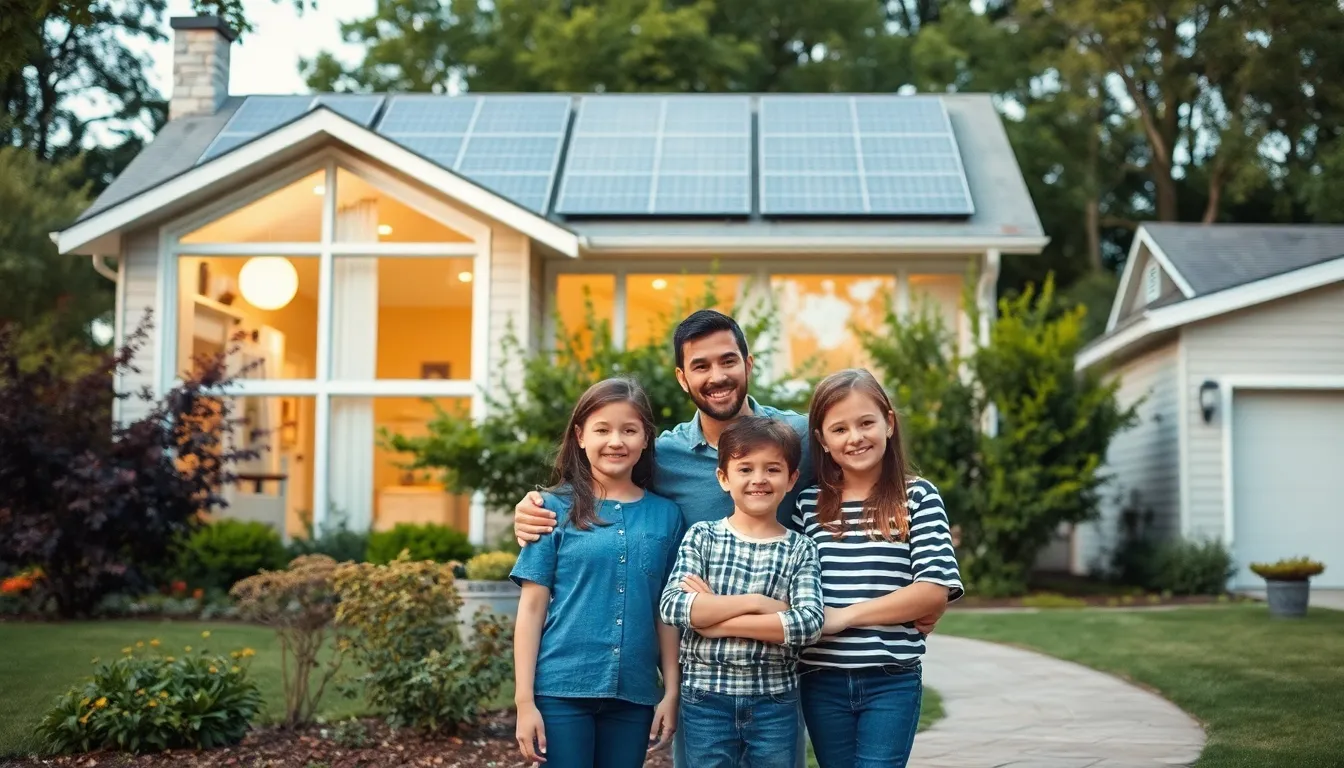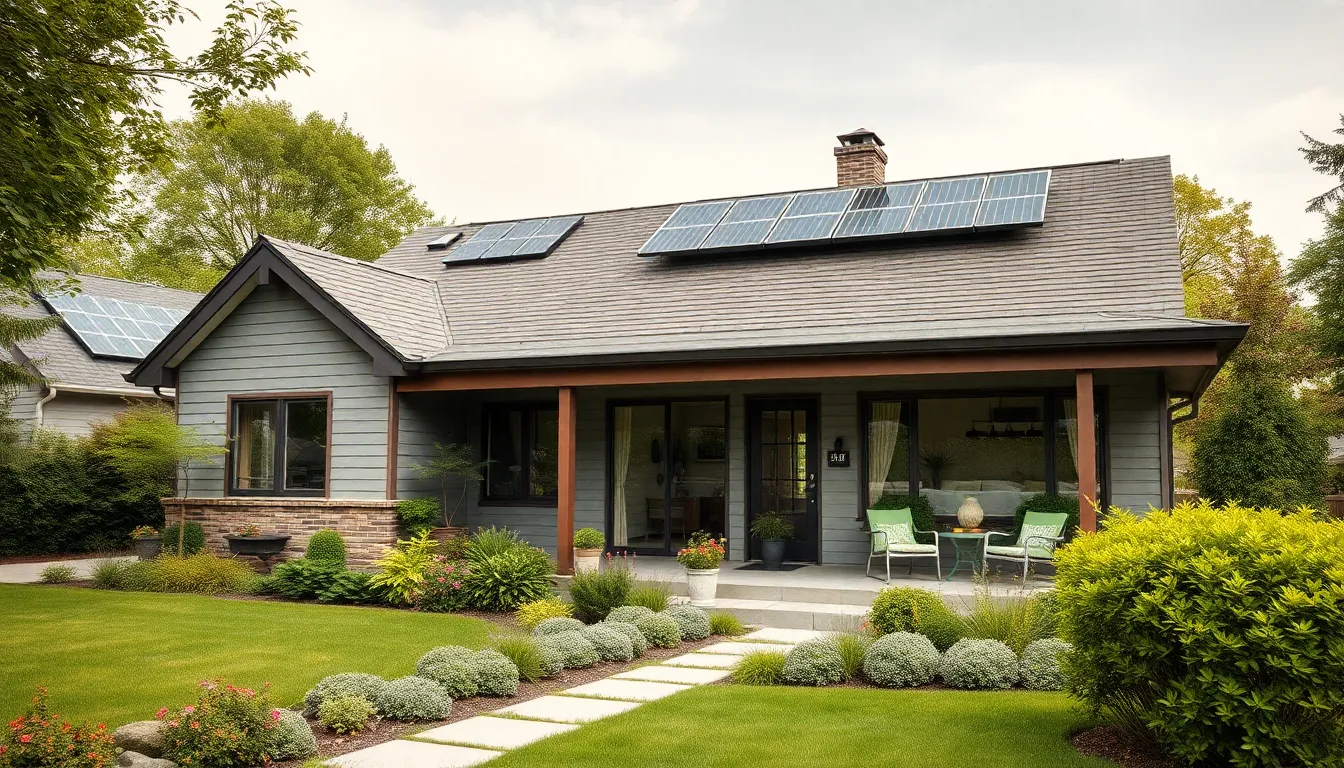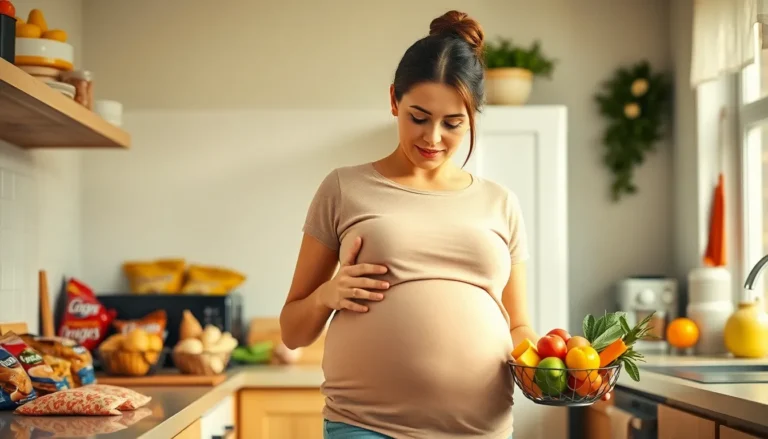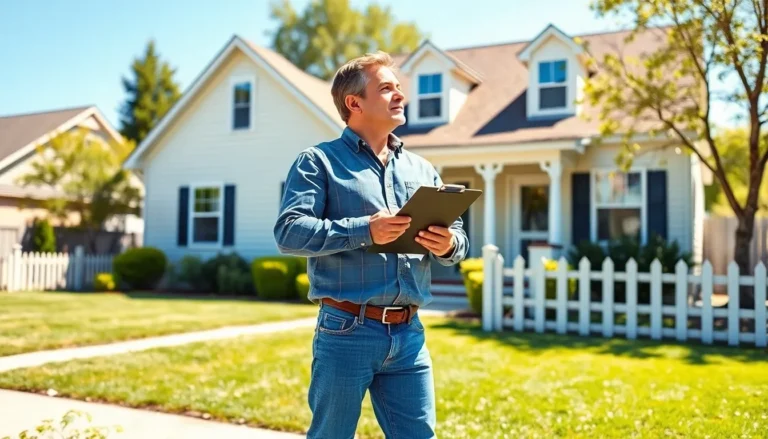In a world where energy bills seem to rise faster than a cat on a hot tin roof, energy-efficient homes are the superhero we didn’t know we needed. Imagine a house that not only keeps you cozy but also saves you cash—sounds like a dream, right? Well, it’s time to wake up and smell the insulation!
Table of Contents
ToggleOverview of Energy Efficient Homes
Energy-efficient homes reduce energy consumption and minimize environmental impact. These homes often incorporate advanced materials and technology, enhancing insulation and regulating temperature. A variety of features contribute to their efficiency, including double-glazed windows, energy-efficient appliances, and smart home systems.
Proper insulation plays a critical role in energy efficiency. Insulation materials, such as fiberglass, foam board, or cellulose, create a thermal barrier that maintains indoor temperatures. Enhanced insulation results in decreased heating and cooling costs by preventing heat loss in winter and heat gain in summer.
Renewable energy sources further improve efficiency. Solar panels, for example, harness sunlight to generate electricity, which can power home appliances and reduce reliance on nonrenewable energy sources. The integration of solar water heaters can decrease utility bills significantly by providing hot water.
Energy-efficient homes also prioritize air quality and comfort. A well-ventilated space equipped with energy recovery ventilation systems enhances air circulation while minimizing energy use. Smart thermostats adjust heating and cooling patterns based on occupancy, providing comfort and lowering costs.
In addition, financial incentives exist to encourage homeowners to adopt energy-efficient practices. Programs offered by government agencies and utility companies may provide rebates or tax credits for energy-efficient renovations. Investing in these upgrades can yield long-term savings and contribute to a sustainable future.
Benefits of Energy Efficient Homes


Energy-efficient homes provide various advantages, from reduced energy bills to enhanced environmental sustainability. These benefits appeal to homeowners seeking comfort and savings.
Cost Savings
Cost savings represent a primary benefit of energy-efficient homes. Homeowners experience lower utility bills due to reduced energy consumption. Energy-efficient appliances use up to 50% less electricity compared to standard models. Proper insulation helps maintain indoor temperatures, resulting in decreased heating and cooling expenses. Various government incentives and utility rebates promote energy-efficient renovations, encouraging investment in upgrades that lead to long-term savings. Over time, these savings can offset initial renovation costs, making energy-efficient homes a financially sound choice.
Environmental Impact
The environmental impact of energy-efficient homes plays a significant role in sustainability. By reducing energy consumption, these homes help decrease greenhouse gas emissions. Energy-efficient features, such as solar panels, contribute to lower reliance on fossil fuels and promote renewable energy use. Furthermore, improved insulation reduces the overall demand for heating and cooling, minimizing the consumption of natural resources. Prioritizing energy efficiency benefits not only homeowners but also contributes to a healthier planet. Implementing energy-efficient practices creates a positive ripple effect, influencing entire communities toward sustainable living.
Key Features of Energy Efficient Homes
Energy-efficient homes incorporate several key features that enhance comfort and reduce energy consumption. Prioritizing proper insulation and the use of energy-efficient appliances plays a crucial role in achieving these objectives.
Insulation and Air Sealing
Effective insulation provides a thermal barrier that keeps indoor temperatures stable. Fiberglass and foam board are commonly used materials for their high insulation values. Air sealing complements insulation, reducing drafts and preventing conditioned air from escaping. Every gap or leak allows energy loss and can raise utility bills. Achieving optimal air sealing often involves caulking and weatherstripping around windows and doors. Together, proper insulation and air sealing can decrease heating and cooling costs, enhancing overall comfort.
Energy-Efficient Appliances
Energy-efficient appliances draw significantly less electricity compared to standard appliances. These appliances can use up to 50% less energy, resulting in substantial savings on monthly utility bills. Ratings from ENERGY STAR indicate high efficiency, facilitating informed decisions during purchases. Replacing older appliances with energy-efficient models often qualifies homeowners for rebates and incentives. Utilizing energy-efficient appliances not only reduces energy consumption but also contributes to a healthier environment by lowering greenhouse gas emissions.
Design Considerations for Energy Efficient Homes
Designing energy-efficient homes involves thoughtful planning, focusing on orientation, layout, and materials. These elements contribute significantly to efficiency and comfort.
Orientation and Layout
Orientation and layout play critical roles in optimizing energy efficiency. South-facing windows capture sunlight during winter months, which naturally warms living spaces. Placing overhangs above windows provides shade in summer, reducing cooling needs. Considering local climate also influences design effectiveness, allowing homeowners to engage in passive solar heating and cooling strategies. A well-thought-out arrangement of rooms can minimize energy usage, placing frequently used areas closer to heat sources. Prioritizing an open floor plan improves airflow, enhancing overall indoor climate control with less energy.
Sustainable Materials
Sustainable materials contribute to the energy efficiency of homes by reducing environmental impact. Opting for recycled and locally sourced products fosters sustainability and minimizes transportation emissions. Insulation made from cellulose or sheep’s wool provides effective temperature regulation while being eco-friendly. Choosing energy-efficient windows with low-emissivity coatings prevents heat loss during colder months. Additionally, selecting durable materials decreases the frequency of renovations, further reducing waste. Utilizing sustainable options creates homes that are not only efficient but also contribute positively to local ecosystems.





